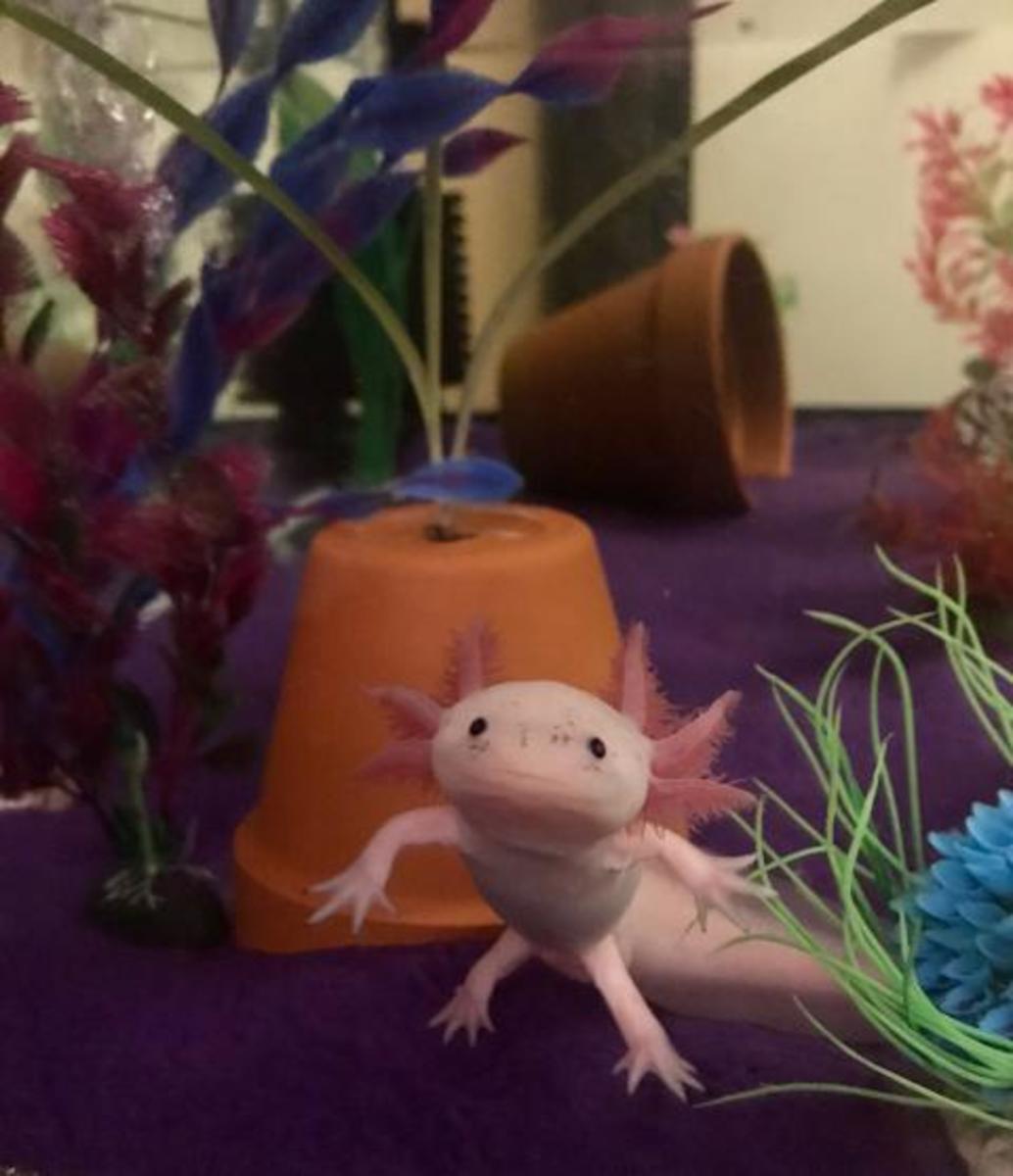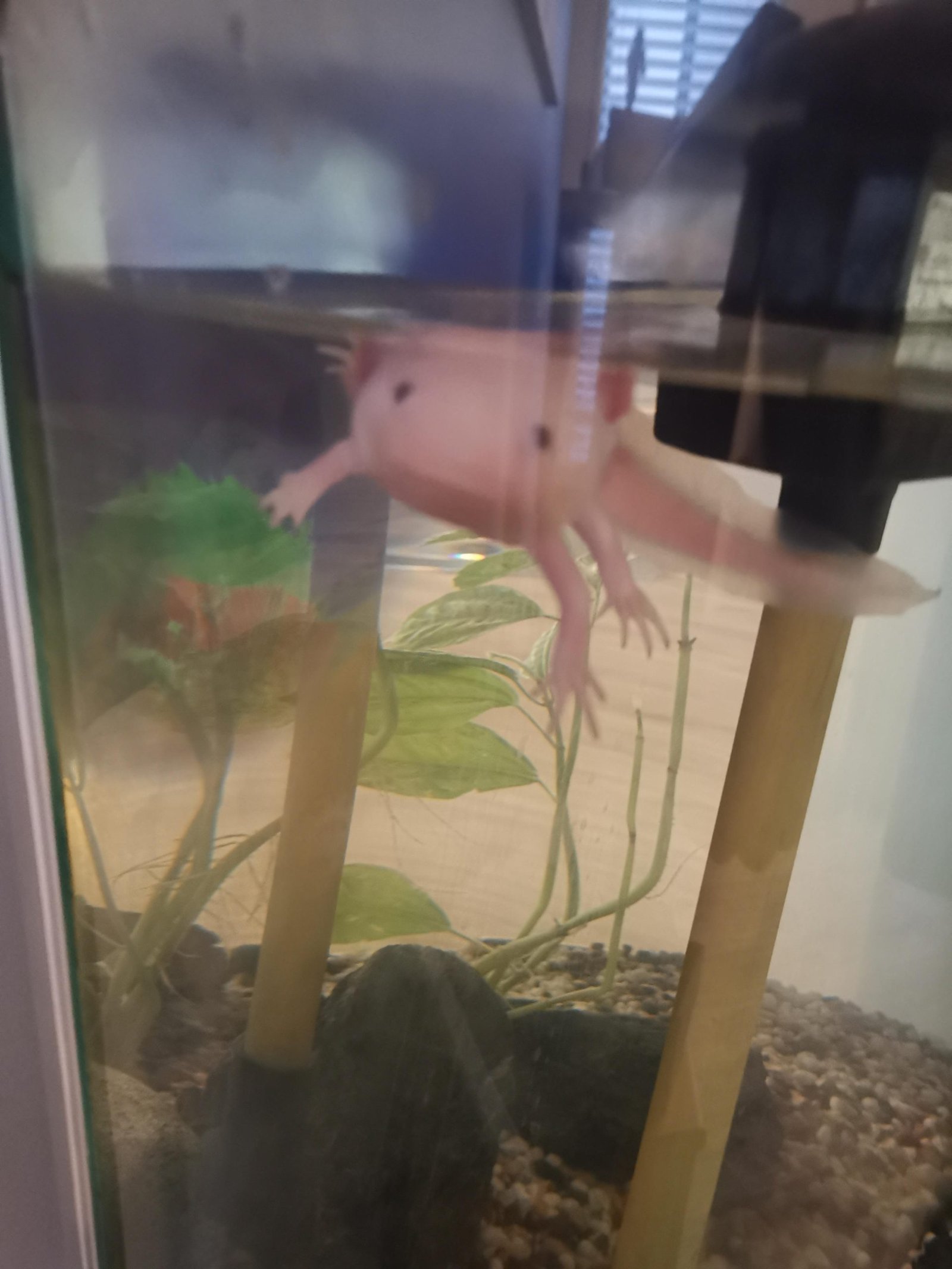Axolotls float when there is an imbalance in their tank’s water parameters, depriving them of oxygen. Axolotls may float due to an imbalance in their tank’s water parameters.
This imbalance can lead to a lack of oxygen, causing the axolotl to float. This floating behavior can be concerning for axolotl owners, and it’s essential to address the issue promptly. We will explore the reasons behind axolotl floating and provide solutions to restore their health and well-being.
Understanding the causes of floating can help you take the necessary steps to ensure a comfortable and healthy environment for your axolotl. So, if you are wondering why your axolotl is floating, read on to find out more.

Credit: pethelpful.com
Understanding Axolotl Floating Behavior
Floating behavior in axolotls can be concerning for many owners. It is important to understand the possible causes behind this behavior. Common causes of axolotl floating include issues with water parameters, stress and anxiety, as well as swim bladder disorders.
Maintaining proper water conditions is crucial to the health and well-being of axolotls. Stressful environments, such as overcrowding or sudden changes in temperature, can also impact their floating behavior. Additionally, swim bladder disorders, which affect buoyancy control, can lead to floating.
Monitoring water quality, providing a comfortable and spacious tank, and minimizing stressors can help mitigate floating issues. Consulting with a veterinarian who specializes in aquatic animals is recommended for a proper diagnosis and treatment plan. Understanding axolotl floating behavior allows owners to provide the best care for their adorable aquatic pets.
Diagnosing And Treating Axolotl Floating
Floating in axolotls can be a concerning issue that requires immediate attention. To identify the root cause, it is essential to adjust water parameters such as temperature and ph levels. Maintaining optimal conditions and proper water filtration are crucial for their health.
Additionally, keeping axolotls in a comfortable tank environment with hiding spots and ample space reduces stress and anxiety. Avoiding sudden changes is also vital to their well-being. Swim bladder disorders, a common cause of floating, can be treated through dietary considerations, exercise, and stimulation.
In severe cases, consulting a veterinarian is recommended. Keeping these factors in mind will help diagnose and treat axolotl floating effectively.
Preventing Axolotl Floating In The Future
Axolotls floating in a tank can be concerning, but there are ways to prevent this issue. Maintaining a healthy tank environment is key. Regular water testing and monitoring are essential for the well-being of your axolotl. Consistent cleaning and water changes help maintain water quality.
Stressors should be reduced, such as disturbances and loud noises that may startle the axolotl. Overcrowding should be avoided, as it can lead to stress and health problems. Proper feeding practices are crucial, such as offering a balanced diet and avoiding overfeeding.
Monitoring food size and consistency ensures that the axolotl can consume it properly. By following these guidelines, you can help your axolotl stay healthy and prevent floating issues.
Frequently Asked Questions For Why Is My Axolotl Floating
Why Is My Axolotl Floating?
Axolotls are known to float when they have a build-up of gases in their digestive system, which can be caused by overfeeding or swallowing air bubbles. This can also be a sign of stress, poor water quality, or a health issue.
It is important to monitor their feeding, water conditions, and seek veterinary attention if necessary.
How Can I Prevent My Axolotl From Floating?
To prevent your axolotl from floating, ensure you are feeding them the appropriate amount of food and avoiding overfeeding. Regular water changes and maintaining good water quality is also crucial. Provide hiding spots and a proper aquarium setup that mimics their natural habitat to reduce stress levels.
Monitoring their overall health and behavior is essential in preventing floating issues.
What Should I Do If My Axolotl Is Floating?
If your axolotl is floating, try gently lowering them back into the water using a net or your hands. Check the water temperature, ph levels, and ammonia levels to ensure they are within the appropriate range. Consider reducing the amount of food given and monitor their behavior closely.
If the issue persists, consult a veterinarian with experience in exotic aquatic pets.
Conclusion
If you notice your axolotl floating, it is important to address the underlying causes. Axolotls may float due to improper water conditions, stress, illness, or injury. Ensuring a suitable habitat, including proper tank size, water quality, and temperature, is crucial for their well-being.
Additionally, providing hiding spots and minimizing disturbances can help reduce stress. Regular monitoring of the axolotl’s health and promptly addressing any signs of illness or injury is essential. Lastly, avoiding overfeeding and providing a balanced diet can contribute to their overall health.
Remember, these amazing creatures are unique and require specific care to thrive. By understanding the reasons behind floating and taking appropriate actions, you can provide the best possible environment for your axolotl’s happiness and longevity.
